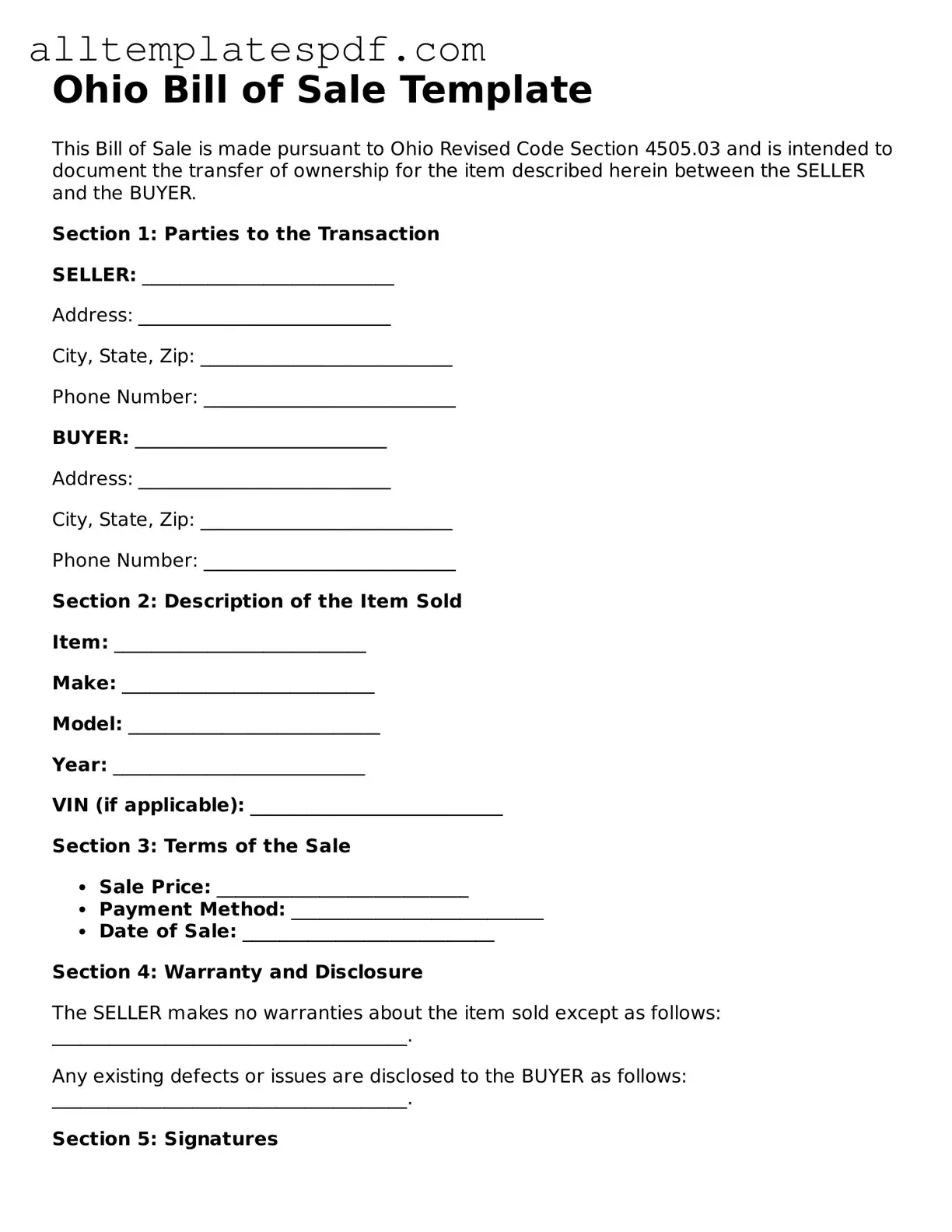Filling out the Ohio Bill of Sale form can seem straightforward, but many individuals make common mistakes that can lead to complications later on. One frequent error is not providing complete information about the buyer and seller. Both parties must include their full names, addresses, and contact details. Omitting any of this information can create confusion or disputes in the future.
Another mistake involves inaccuracies in the vehicle description. It is crucial to accurately list the make, model, year, and Vehicle Identification Number (VIN) of the vehicle being sold. Any discrepancies can raise questions about ownership and may complicate the transfer process.
Some individuals fail to include the sale price. The Bill of Sale should clearly state the amount the buyer is paying for the vehicle. Leaving this section blank or providing an incorrect figure can lead to tax issues or disputes between the parties involved.
Not signing the document is a common oversight. Both the buyer and seller must sign the Bill of Sale to validate the transaction. A missing signature can render the document ineffective, leaving both parties without proof of the sale.
Another mistake is neglecting to date the form. The date of the transaction is essential for record-keeping and can impact the transfer of ownership. Without a date, it may be unclear when the sale took place, leading to potential legal issues.
People sometimes forget to check local requirements. While the Bill of Sale is a standard document, some counties in Ohio may have specific regulations or additional forms that need to be completed. Ignoring these local requirements can result in delays or complications.
Failing to provide a copy to the buyer is another common error. After completing the Bill of Sale, the seller should ensure that the buyer receives a copy for their records. This document serves as proof of the transaction and may be needed for future reference.
Lastly, individuals often overlook the importance of keeping a copy for themselves. Retaining a copy of the Bill of Sale is vital for the seller, as it serves as evidence of the sale and can be useful in case of disputes or questions about the transaction in the future.
